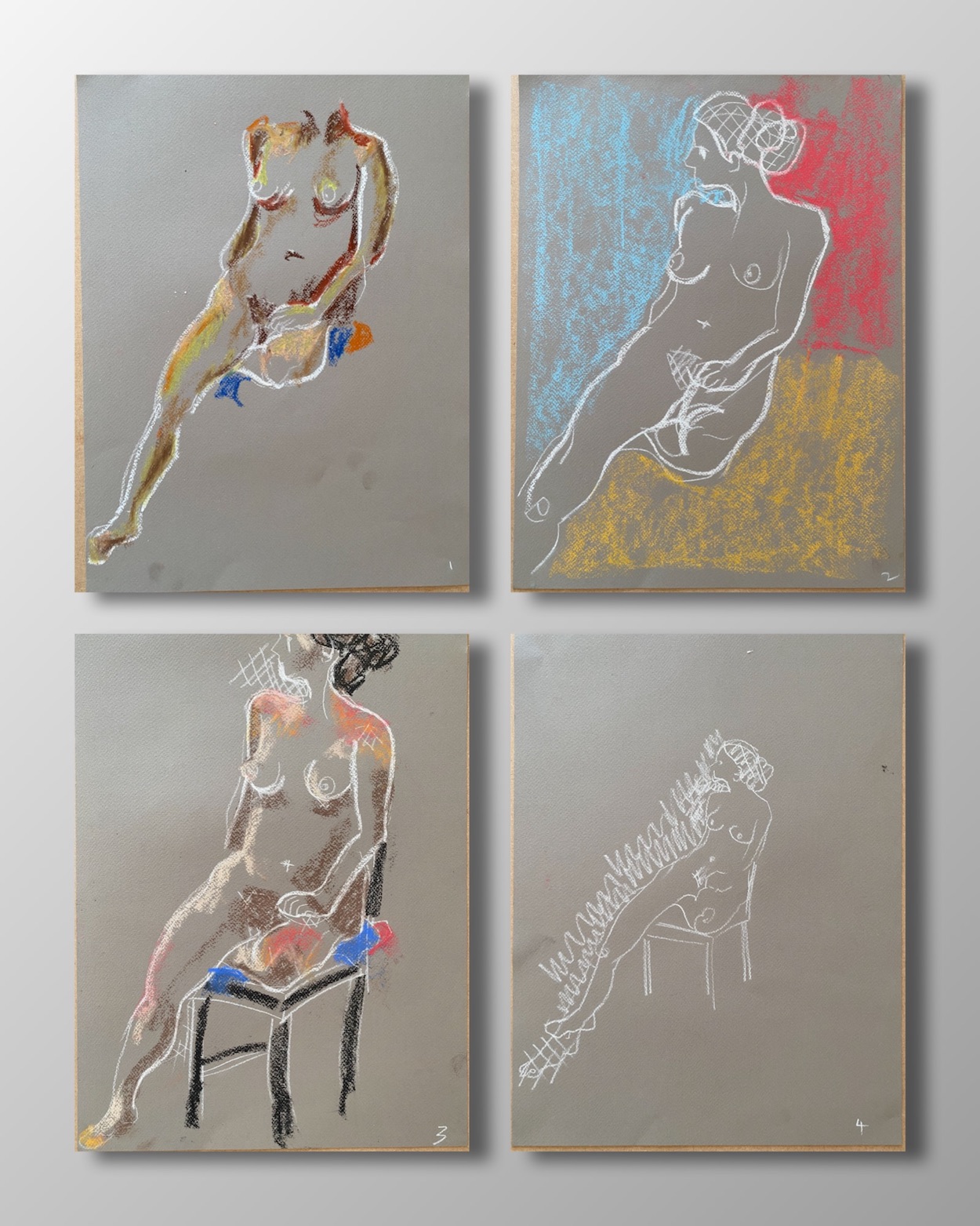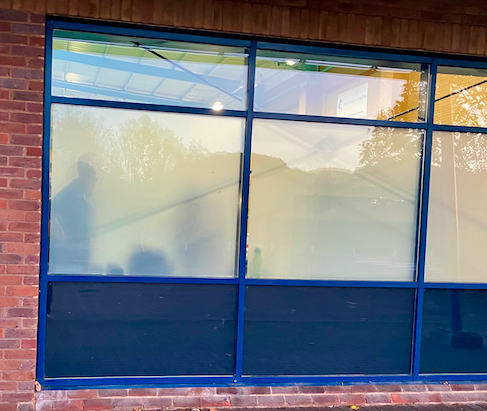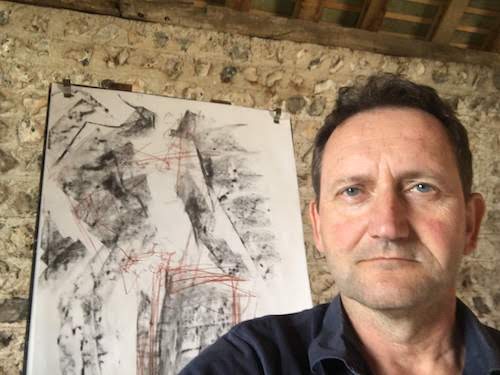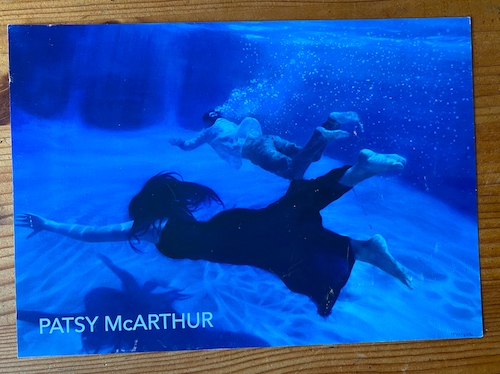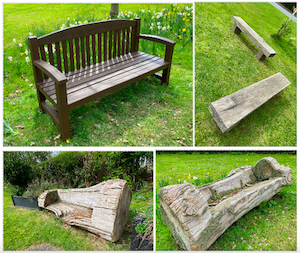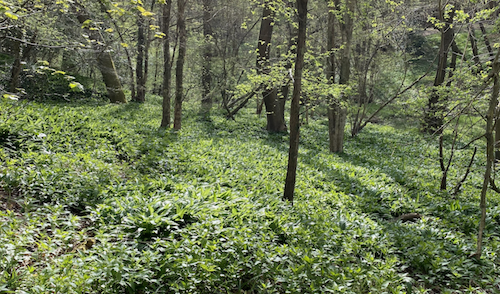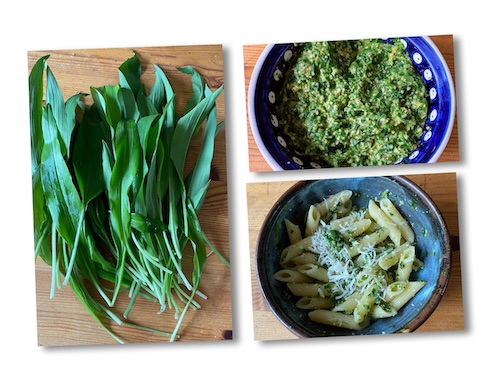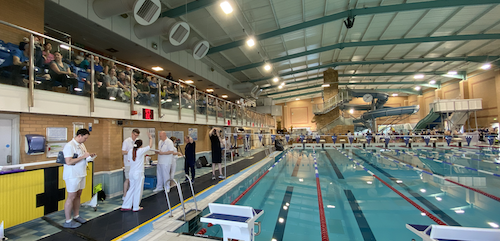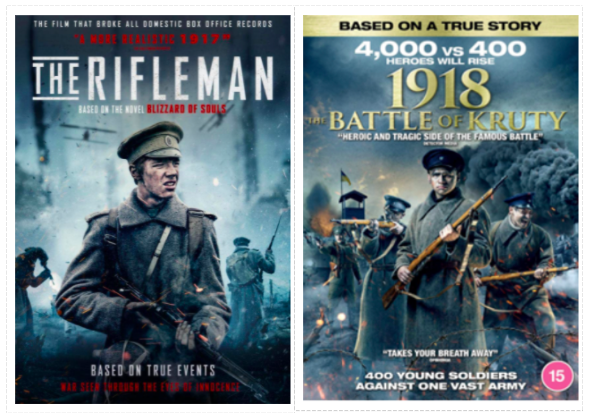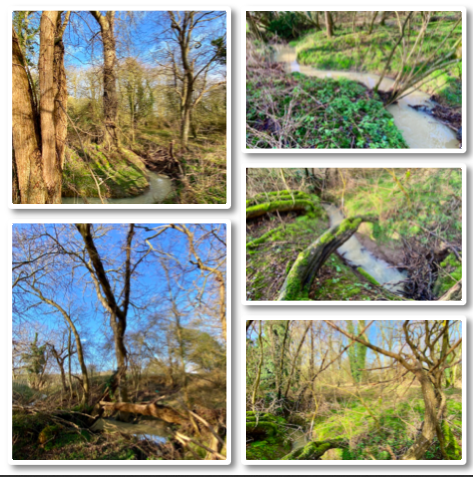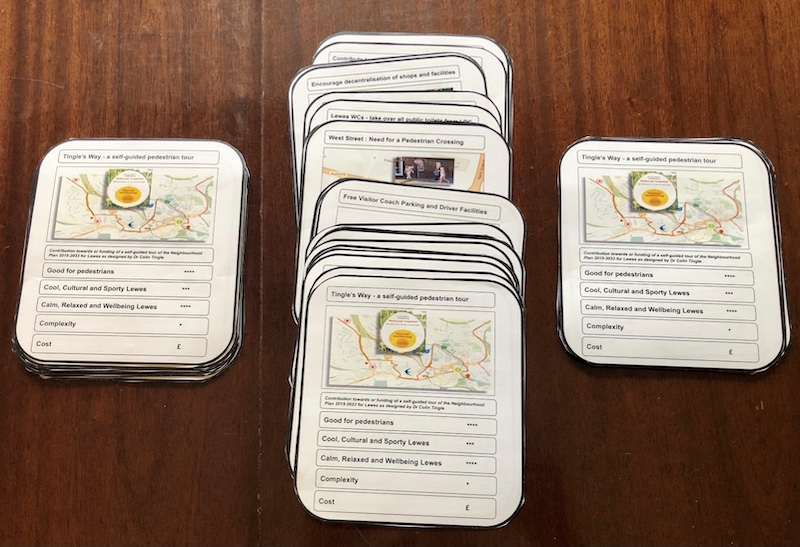Teacher's matter.
Silvia Macrae Brown runs the life drawing class at Charleston on the first Tuesday of each month. I go along when I can, Covid permitting. I've taken the day off from work in the past to go along. It is just one day.
It matters to have someone with a plan, especially if it is designed to stretch us. This isn't one of those classes where anatomical exactness created over a single pose over many hours is wanted, rather we have multiple poses, movement, drawing with our non-dominant hand, or with our eyes closed.
Today was different. There is an exhibition of Duncan Grant's work 'Duncan Grant: 1920' showing at the moment.
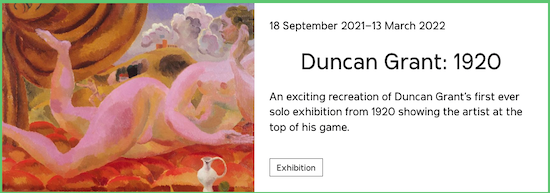
So the plan was to work the way artists at Charleston worked 100 years ago - a life model was a rare treat so what doodles and sketches they made were reimagined into later works, painted onto tiles, cupboards and wall panels.
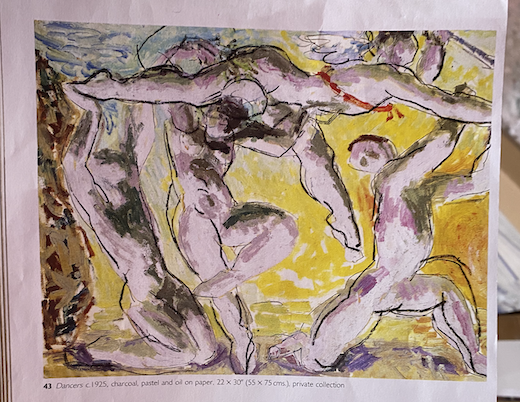
Now it was my turn.
I've always embraced instructions whether from a coach or teacher - however awkward I may feel the challenge of the new can create insight. Today was such a day.
An idea that had been fermenting in the first idea for something to contemplate in the afternoon was brought forward. The model would hold a pose and rotate 45% every minute - that of put her on a rotating plinth. I prefer the short pose. I find 30 seconds is enough. The race is to 'grab' the essence of the pose for future reference. Silvia is a sculptor who often references her own approach to seeking to find the essence of a pose.
Having too much time to think while the model was delayed I put down some ideas for a story set in a life drawing class (model dies during a long pose), and also tried downloading a drawing App to my iPad (too old, not the write operating system), then my phone. A few experiments with a stylus and I gave this up as a lost cause (for today). My son uses swears by an iPad Pro - but I don't have that luxury.
Pen and ink will have to suffice. I use a regular Lamy fountain pen and black ink. I used to swear by an artist's felt-tip but have come to prefer ink on paper for its smudge-ability and inconsistency; I enjoy the fight. Just as I enjoy keeping one step ahead of the blunt pencil by having at least 20 sharpened (with a Stanley Knife, never a pencil sharpener).
I keep all drawings.
This is a dictate handed down by my later mother who did her MA in Fine Art at Durham University in the 1950s; she studied under Quentin Bell. I will just show a few here to illustrate the progress. Plenty of my efforts fail - I correct minor errors and leave them on a page, with a disaster I abandon the sheet and quickly get back to doing another, and another, and another until it starts to look and feel right. I doubt I discard two sheets of paper in any day long session - usually I draw over, or mark out something that doesn't work. I rarely if ever use a rubber, unless it is being used as a tool in the creation of a particular 'look'.
This is what is meant about getting your hand in ... like a gymnast or dancer practising moves before a session.
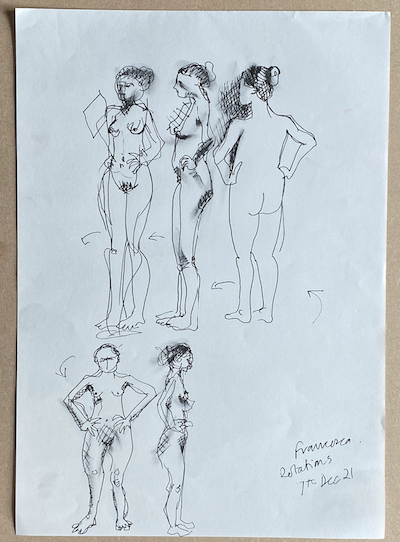
After another go like this and taking note of the instruction to be capturing the essence of the pose I went for something smaller. (Imagine trying to draw a horse, bird or cat that will not be so accommodating! I have tried drawing people in real life, but gave up, unless they were static: on the beach, or watching TV).
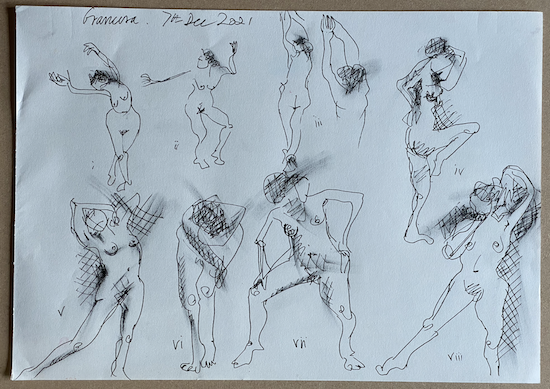
From these the idea was to take a pose and work it up as a single art piece, as bathroom tiles, wall paper or some such as the Charleston artists did (not the reproduction tea towels and place mats you might buy in the shop).
From here, whether or not the model was posing (which felt impolite and potentially a waste of a rare resource) we were invited to take a pose and work it up as a pattern, shape or draft for an artwork. I had a few goes with a single, double and various other repetitions and combinations.
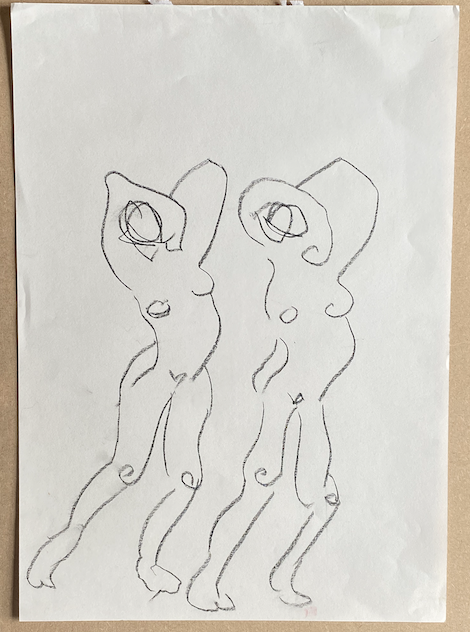
And a single pose with colour - something I've rarely ventured into using!
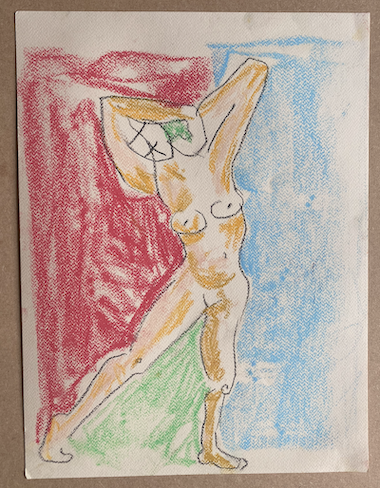
This was a breakthrough moment for me. I've only ever thought of a life class to be a period of work that delivers its only outputs at that moment, on the day. That any reworking of something would be a lesser thing - akin to copying from a photograph. How wrong I am. Of course artists are forever gathering up ideas on pads of paper or working with models and items in the studio to work up into a distinct and separate work.
For lack of ink and seeing a set of blue sheets of paper to use up I went for white charcoal and produced a series of five multiple sketches on single sheets, followed by a few single images. I was beginning to feel confident with what I was able to express with a few simple lines. The skill is to let the hand/arm draw what the eyes are seeing and the brain is feeling. Experience, practice and growing knowledge of where the bones and muscles are helps.

We were then invited to return to a favourite pose and work on this. The model kindly took a number of poses as requested including the 'crossed arms above the head' which I favoured.

We ended the session with a seated pose. Enjoying using the white charcoal pencil I had only grey or green darker papers to choose from. A single pose for 35 minutes I did four sketches in each trying to do little more than get the entire figure on the page without making it too small. I then added the colour based on the model sitting under a bright orange/red heater in the barn where we are working.
